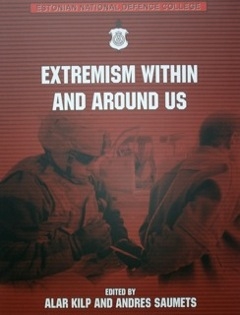ZUR ENTSTEHUNG UND PROBLEMATIK DES NEUZEITLICHEN TOLERANZGEDANKENS UND DER GEWISSENS- UND RELIGIONSFREIHEIT AM BEISPIEL ...
ZUR ENTSTEHUNG UND PROBLEMATIK DES NEUZEITLICHEN TOLERANZGEDANKENS UND DER GEWISSENS- UND RELIGIONSFREIHEIT AM BEISPIEL ...
Author(s): Andres SaumetsSubject(s): Christian Theology and Religion
Published by: Kaitseväe Ühendatud Õppeasutused
Keywords: tolerance; freedom of conscience; religious freedom; heresy; corpus Christianum; Martin Luther; radical reformation; Anabaptists (Täufer); non-conformists; free churches.
Summary/Abstract: This article gives an overview of how the idea of religious tolerance evolved in Early Modernity by passing through such historical phases of the Christian Church as intolerance and the pursuit of truth. It then reveals the main reasons and legal background for the political and religious persecution of heretics. Above all, it was due to Martin Luther’s Reformation theology that freedom of conscience became an important issue in Early Modernity. That being said, at that time freedom of religion was not understood as an individual and inherent human right, and this “free” conscience was seen through the prism of an objective gospel truth, just as Luther conceived it via his own exegetic work. The ideology celebrating the individual and universal freedom of conscience and religion – being founded on a different interpretation of the Scriptures, and existing in the context of a radical reformation that led to the voluntary establishment of new communities based on personal religion (anabaptist in the 16th century, and nonconformist in the 17th century) which were formed outside the territorial state or state churches – was treated by both the Protestant and Catholic religious establishment as a heretical movement and political uprising that required harsh repression. The Christians – who were seeking other alternatives to the prevailing corpus-Christianum model that was applied to the relationship between Church and state, and who had therefore challenged the current socio-political order – were systematically persecuted far and wide. This theological condemnation of the heretics (Anabaptists) was also expressed in 16th century Lutheran doctrine. This church- and state-level oppression of believers belonging to the ranks of the Radical Reformation clearly reveals the serious shortcomings rooted in that interpretation of moral and religious freedom when examining this question in the context of Early Modernity. On the other hand, this article suggests that, from the point of view of the development of religious tolerance, the impetus that prompted demands for individual and universal freedom of conscience and religion in Early Modernity came above all from the fringes of the state churches, whether Catholic or Protestant, and even from within the communities operating outside of those Churches.
Journal: KVÜÕA toimetised
- Issue Year: 2011
- Issue No: 14
- Page Range: 130-162
- Page Count: 33
- Language: German

